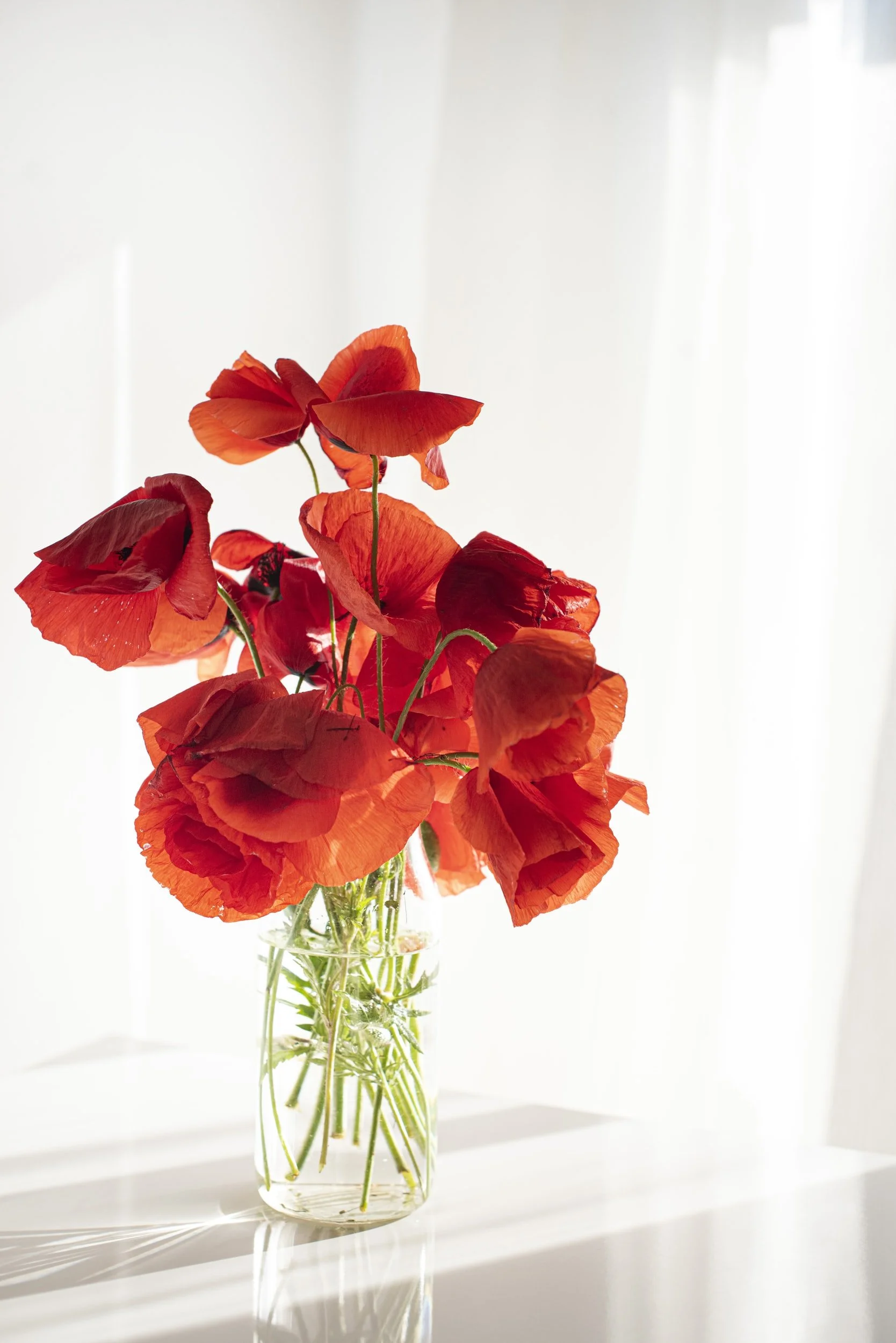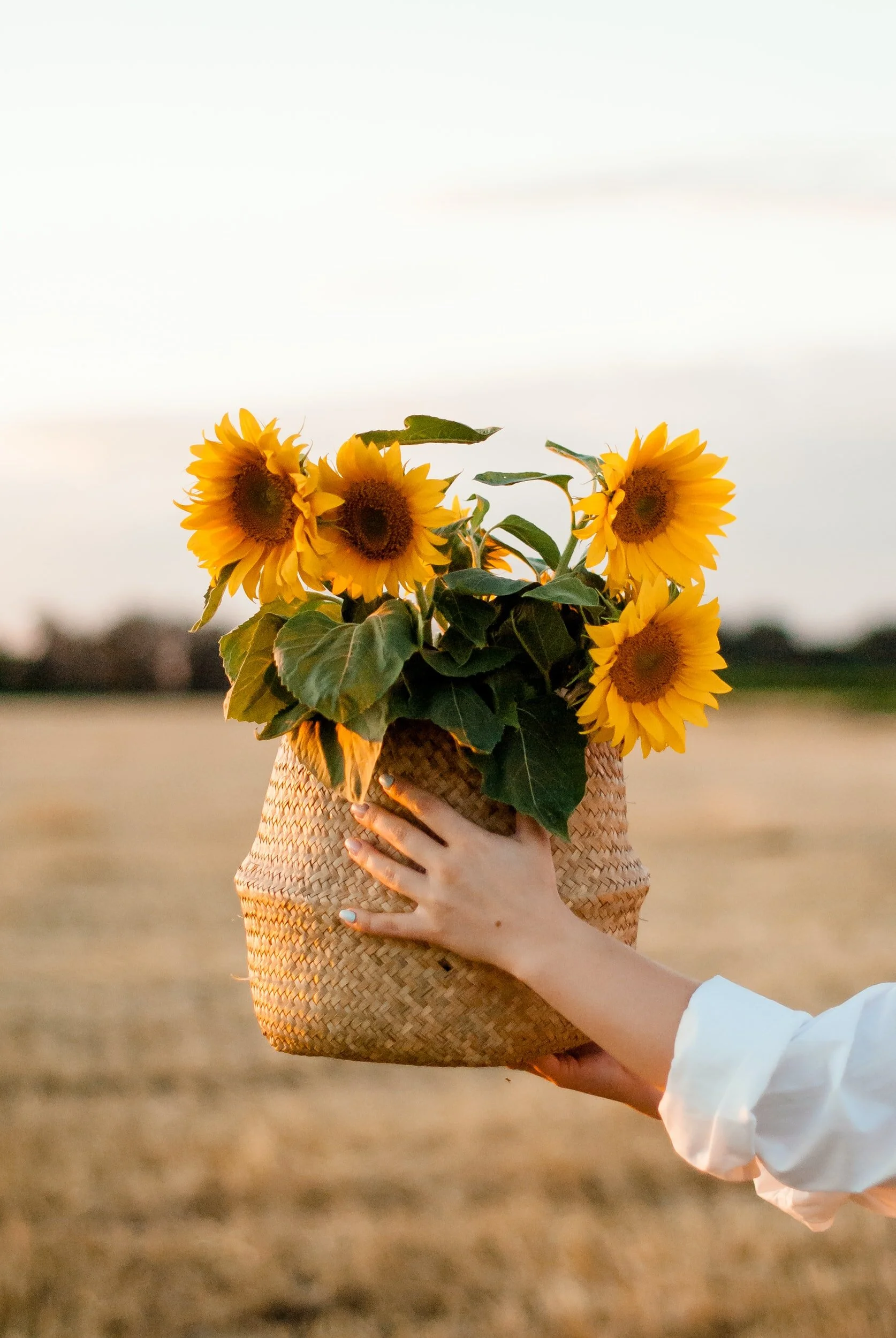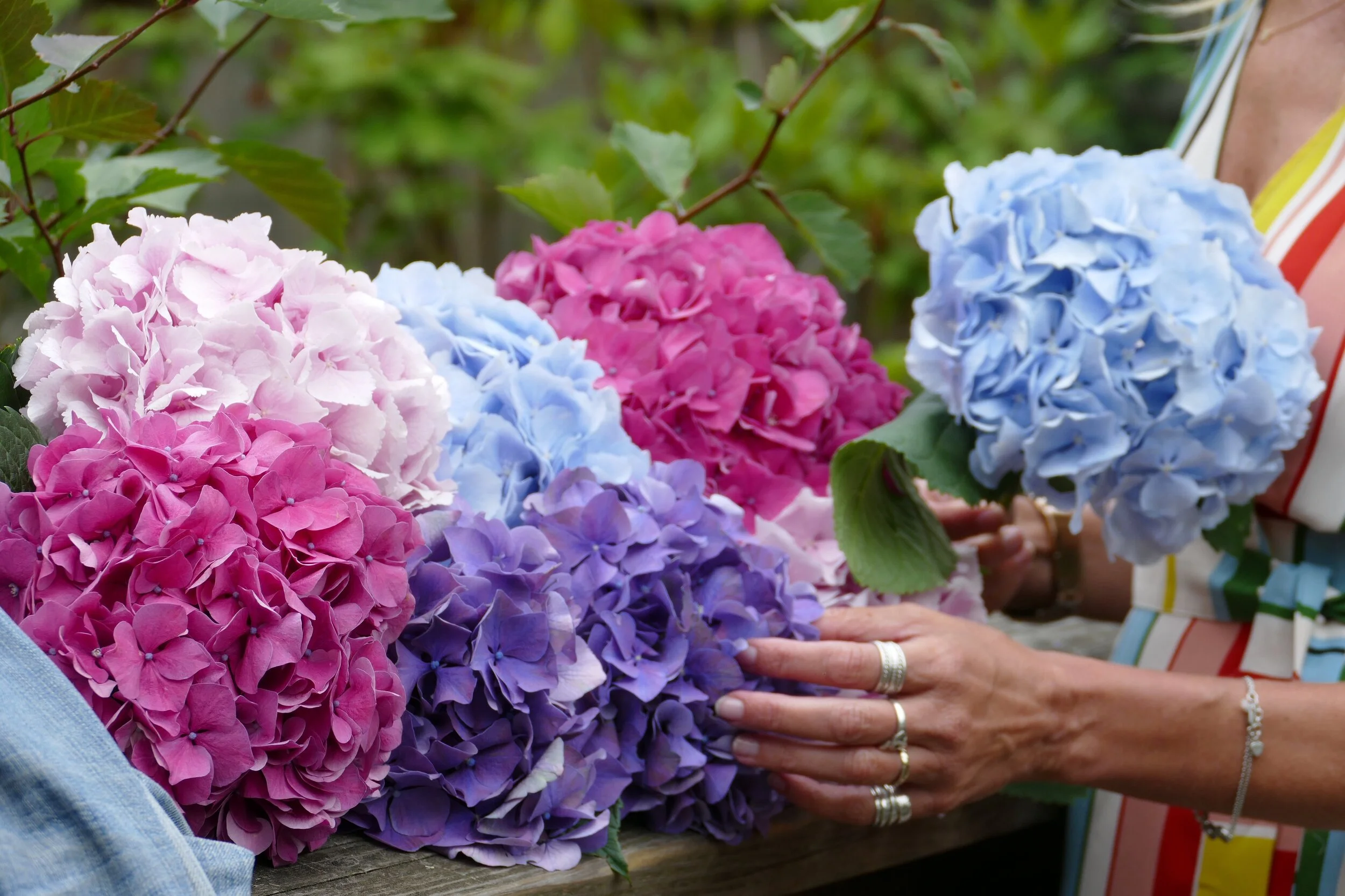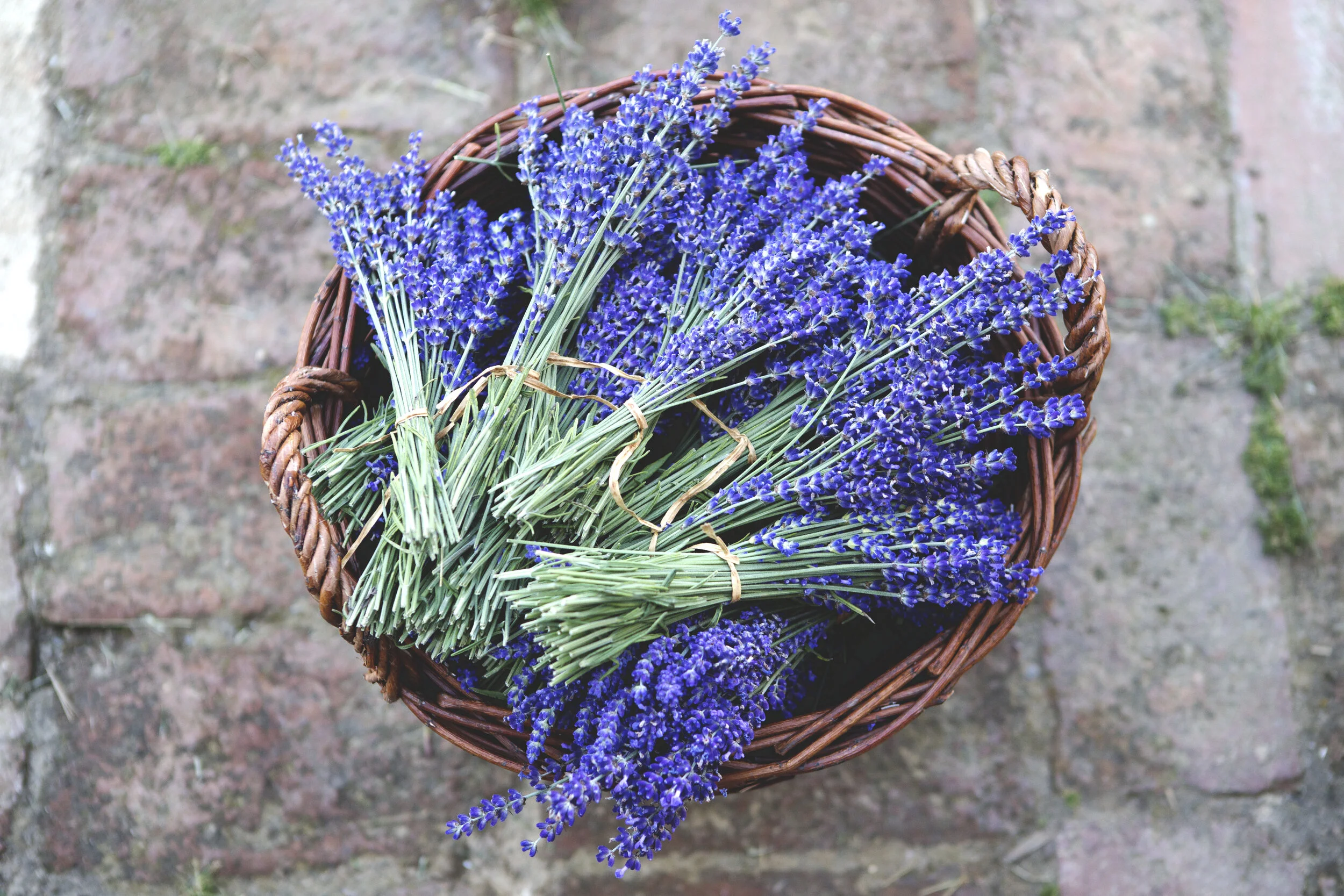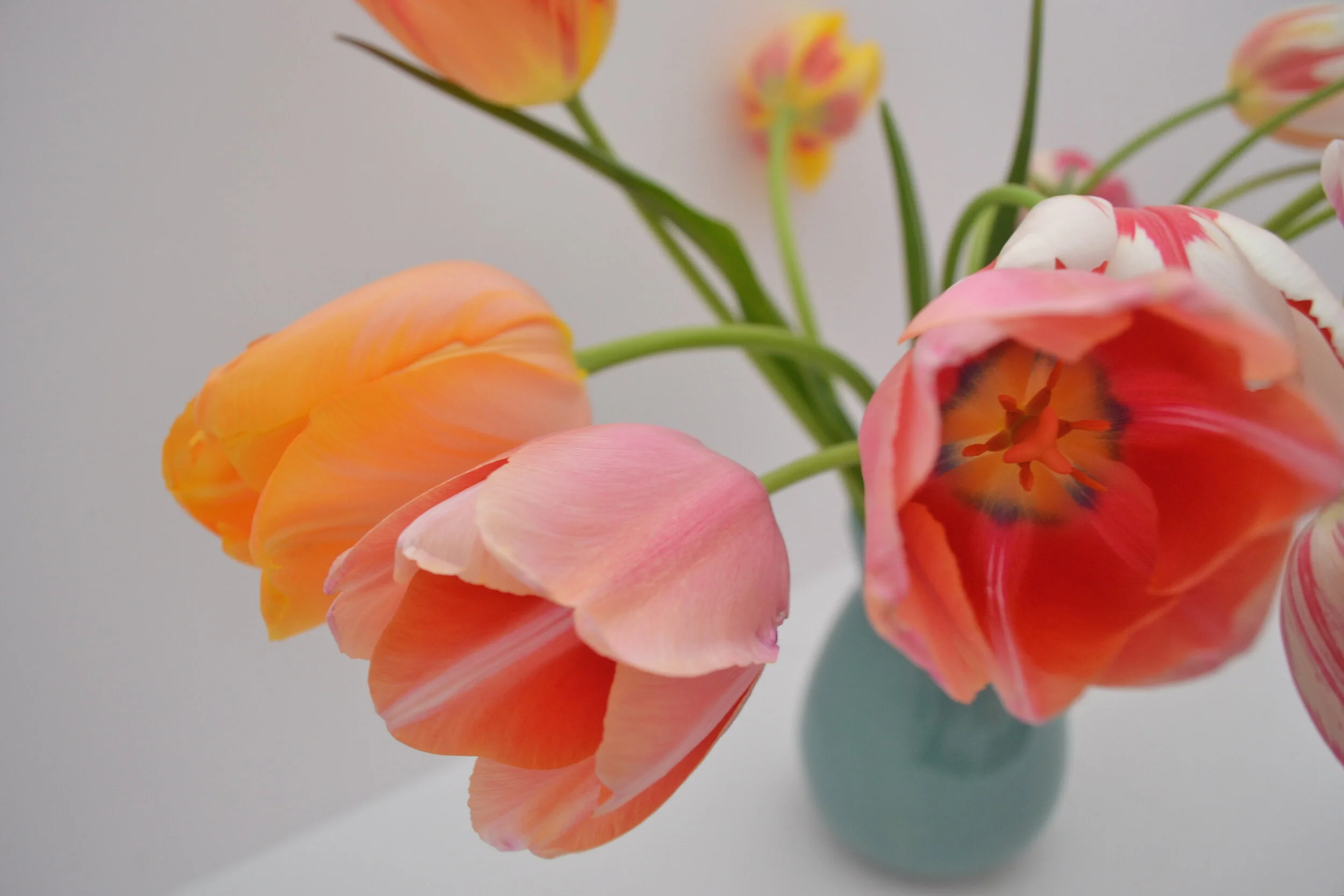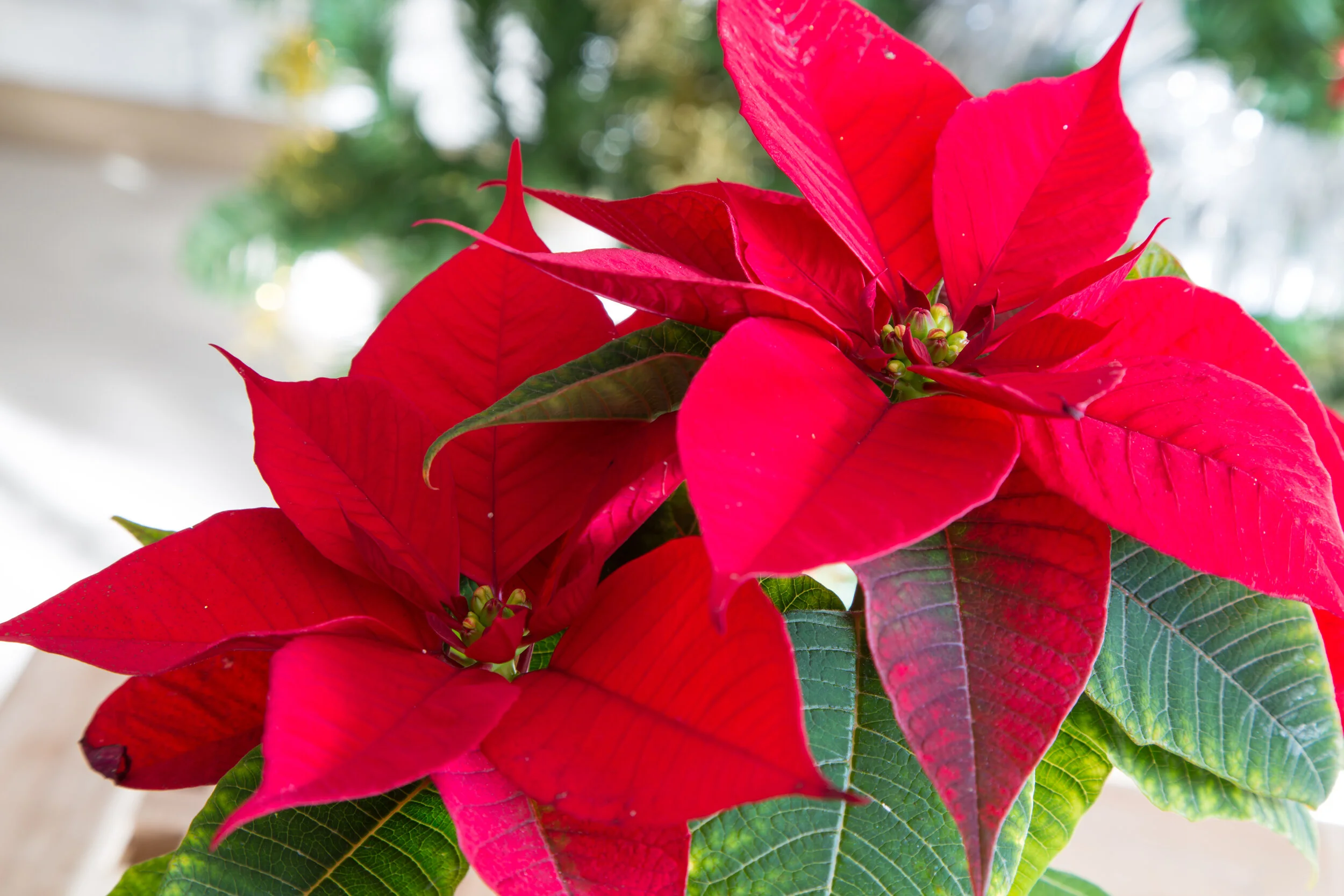Six Things About Poppies You May Not Know
I thought since Remembrance Day is this week, I’d share some things about poppies. Some are about the red poppy and it’s association with Remembrance Day, and some things are about the poppy flower in general.
I thought since Remembrance Day is this week, I’d share some things about poppies. Some are about the red poppy and it’s association with Remembrance Day, and some things are about the poppy flower in general.
During WWI, poppies stopped growing in the fields because of the bombing and the trampling of soldiers over the battlefields. This lasted for four years. After the war the fields erupted in an overwhelming display of red poppies.
Poppies should be worn on your left side, as close to your heart as possible.
Have you ever noticed that Queen Elizabeth wears 5 poppies? The reason for this has never been confirmed but it’s thought they represent the five services in the war - Army, Navy, RAF, Civil Defence, and women.
The meaning of poppies is restful sleep and remembrance.
Poppies aren’t only red. They come in white and shades of pink, yellow, orange and purple.
Poppies make a great addition to a bouquet, but they have a relatively short vase-life - average of five days.
In Flanders Fields - John McCrae (1872-1918)
In Flanders fields the poppies blow
Between the crosses, row on row,
That mark our place; ;and in the sky
The larks, still bravely singing, fly
Scarce heard amid the guns below.
We are the Dead. Short days ago
We lived, felt dawn, saw sunset glow,
Loved and were loved, and now we lie
In Flanders fields.
Take up our quarrel with the foe:
To you from failing hands we throw
The torch; be yours to hold it high.
If ye break faith with us who die
We shall not sleep, though poppies grow
In Flanders fields.
7 Cut Flowers That Can Take The Summer Heat
If you’re someone who loves having flowers in your home (which I hope you are), but you’re worried in the summer heat they just won’t last, here are seven suggestions for flowers that stand up to the heat.
If you’re someone who loves having flowers in your home (which I hope you are), but you’re worried in the summer heat they just won’t last, here are seven suggestions for flowers that stand up to the heat.
Lisianthus: (Appreciation/Gratitude)
Lisianthus have a delicate appearance but can last in a vase for two weeks.
Cymbidium Orchid: (Refined beauty)
Cymbidium orchids come in large and mini varieties and have a three week vase life.
Gladiolus: (Strength of character)
Tall stemmed and available in a wide variety of colours, gladiolus can last for two weeks.
Anthurium: (Hospitality)
A classic, tropical flower, your anthuriums can last 4-6 weeks.
Protea: (Courage)
This tropical flower comes in a large variety of shapes and can last a month.
Sunflower: (Adoration)
A true flower of summer, sunflowers can last 2-3 weeks in a vase.
Bird of Paradise: (Magnificence)
A popular tropical flower, bird of paradise has a 3 week vase life.
Top tip:
While these flowers are known for a longer vase life, make sure you still follow the usual guidelines for flower care. You can find that information HERE .
Five Things to Know About Remembrance Day Poppies
The 11th hour of the 11th day of the 11th month - Remembrance Day. The day World War I ended and the day we remember and acknowledge those who lost their lives in war. As the years go by, it’s more important than ever that we don’t forget those who went before us and what they sacrificed for us. As this is a blog about all things floral, I’m sharing …
A field of poppies
The 11th hour of the 11th day of the 11th month - Remembrance Day. The day World War I ended and the day we remember and acknowledge those who lost their lives in war. As the years go by, it’s more important than ever that we don’t forget those who went before us and what they sacrificed for us. As this is a blog about all things floral, I’m sharing five things about the Remembrance Day poppy.
Your poppy should be worn on the left lapel of your jacket as close to your heart as possible. According to the Royal Canadian Legion, the lapel poppy is a sacred symbol. Wearing it over the heart is a sign of respect. The pin you use to affix the poppy should not obstruct the actual poppy in any way.
The donations received for poppies go towards funding veteran’s needs. We’ve all put money in the little box as we get a poppy, and probably don’t think much about it. But that money is used to directly help veterans if they need financial assistance, housing, long-term care, or have medical needs. That’s something to think about the next time you pop some coins in the box.
The author of the famous poem, ‘In Flanders Fields’, was Canadian. John McCrae was a doctor serving with the Canadian Artillery in 1915. He wrote his poem after the funeral of his friend and fellow soldier. The poppies are a reference to the flowers that grew over the soldiers' graves. It is now one of the most well-known poems in Canada.
The Remembrance Day poppy is not the same poppy that opium comes from. There are many varieties of poppies. The ‘opium’ poppy is native to Turkey, while the poppies in Flanders is native to France. While poppies grow in many colours - white, pink, yellow, orange, red, and purple - it’s only the red poppy that represents Remembrance Day.
There is a protocol of what to do with your poppy after Remembrance Day. As a sign of respect, after a Remembrance Day ceremony, poppies can be removed and placed at the base of the cenotaph or on a wreath. If you’re not at a ceremony, your poppy should be disposed of in a respectable way or stored carefully until the next year.
This Remembrance Day, let’s wear our poppies (over our hearts), and while remembering the pain of the past, have hope for a peaceful future.
“IN FLANDERS FIELDS THE POPPIES BLOW
BETWEEN THE CROSSES ROW ON ROW ...”
First two lines of In Flanders Fields - May 3, 1915, John McCrae
Nine Flowers and Facts you may be Surprised to Learn
We all love flowers. They’re a gift to us from nature, that we re-gift by giving to others. They’re beautiful and colourful, and fragrant, and they put a smile on our face. They’re also really interesting! I’ve chosen nine flowers to share some fun facts about.
1 - Sunflowers: Young sunflowers move throughout the day, following the sun from east to west. Why does this happen? It has to do with the growth of the sunflowers. It’s a result of …
The colour of a hydrangea is determined by the type of soil it’s grown in.
We all love flowers. They’re a gift to us from nature, that we re-gift by giving to others. They’re beautiful and colourful, and fragrant, and they put a smile on our face. They’re also really interesting! I’ve chosen nine flowers to share some fun facts about them.
1 - Sunflowers: Young sunflowers move throughout the day, following the sun from east to west. Why does this happen? It has to do with the growth of the sunflowers. It’s a result of different sides of the stem, growing at different times of the day. The side of the stem facing east grows quickly during the day, and the side facing west grows quickly at night. Thus they move from east to west, following the direction of the sun. Once the sunflowers are mature, their growth slows down and they gradually stop tracking the sun altogether.
2 - Roses: Roses are related to many herbs and trees that include edible fruits. The rose family is called ‘rosaceae’. Included in this are a number of trees: apple, pear, peach, nectarine, plum, cherry, and almond, as well as berries including raspberries and strawberries. If you look closely at these trees and bushes when they’re flowering, you’ll see the similarities between them all.
3 - Tulips: At one point in history, tulips were more valuable than gold. In Holland in the 17th century, tulip bulbs became so desirable they could cost more than ten times an annual middle-class income. That crazy time became known as ‘Tulip Mania’. Eventually, the tulip market crashed, and while they no longer have the same monetary value, they’re still one of the most popular springtime flowers.
4 - Chocolate Cosmos: This flower actually smells like chocolate. It’s true! This delicate bloom actually smells like chocolate (and the colour actually looks like a red velvet cake). But while it smells like chocolate, don’t be tempted to eat it as it’s not an edible flower.
5 - Gerberas: Gerberas help you get a good night’s sleep. Gerba’s are so bright and cheerful looking you don’t think of them as a ‘restful’ flower. But because they release small amounts of oxygen throughout the night, they make a great flower to have next to your bed.
6 - Hydrangeas: The colour of a hydrangea is determined by the type of soil it is grown in. The acidity level of the soil is what determines if you will have a blue, pink, or purple bloom. If the soil has a higher pH level, the hydrangeas will be pink. As the pH level gets lower they will become purple or blue.
7 - Daffodils: Daffodils are used as currency. On the island of Scilly, as rent for his lands, Prince Charles is paid one daffodil! (That would be a nice rent to have to pay.)
8 - Lilies: You can extend the vase life of lilies with one simple act. Fresh cut lilies can last up to two weeks. But you can extend their vase life even further by removing the pollen from the centre of the flower. When each bloom opens, carefully remove the pollen off the stamen. Be careful to not get any pollen dust on the petals as it will eat away at the flower shortening its life span.
9 - Daisies: How did the daisy get its name? One theory is related to its physical appearance. It’s said the yellow centre of the daisy resembles the sun. That was known as ‘the day’s eye’. Eventually, that just morphed into ‘daisy’.
Before I started researching for this post, I knew some of these facts but didn’t know all of the explanations. Others were completely new to me. What did you learn?
(I’m now working on another post with uncommon facts related to edible flowers.)
Lovely Lavender
Lavender – the magical herb. Loved by bees, butterflies and humans. It’s fragrant, calming and surprisingly versatile in the culinary world.
Lavender has one of the most recognized floral fragrances. It’s mild, mellow, and sweet with herbal undertones, used in everything from …
Lavender – the magical herb. Loved by bees, butterflies and humans. It’s fragrant, calming and surprisingly versatile in the culinary world.
Lavender has one of the most recognized floral fragrances. It’s mild, mellow, and sweet with herbal undertones, used in everything from perfumes, to sleeping aids, to cleaning supplies. I use a lot of lavender products. In fact, I have a whole ‘layers of lavender’ routine I use every evening before I go to bed. It’s definitely a favourite of mine.
Scientists are conducting ongoing research about the benefits of lavender. Right now those studies include lavender’s effect on learning and memory, sleep and insomnia, anxiety and depression, and an assortment of aches and pains.
Along with all the potential ways lavender can help make life healthier, there are also ways to use it to make life more beautiful. Here are some simple, creative ways to use lavender to enhance your home:
Create a relaxing atmosphere by adding a few drops of lavender essential oil to your diffuser. The soothing fragrance will slow down your heartbeat and relax your muscles, easing stress.
Having a glass of prosecco or a gin and tonic? Add a fresh sprig of lavender to your glass to make your drink festive and extra tasty.
When it’s time to vacuum, sprinkle some dried lavender buds down first to add a fresh fragrance to your carpet.
Make a wreath of dried lavender for your front door. You’ll be uplifted by it’s beauty and fragrance every time you enter or leave your home.
Tie a bunch of lavender and eucalyptus together and hang it in your bathroom where it won’t get wet, but the hot steam will reach it. The scent wafting around will be so relaxing you’ll think you’re at the spa!
For an easy, eye-catching centerpiece, take several small vases and put a few stems of fresh or dried lavender in each one and then randomly place them around your table.
And just for fun, here are some interesting facts about lavender:
Most lavender comes in shades of purple or blue, but there are some varieties that are pink or yellow.
In the language of flowers, the meaning for lavender is devotion.
Nectar from lavender makes a delicious honey.
Lavender comes from the same family as mint
The name lavender comes from the Latin verb, ‘lavare’, which means ‘to wash’.
What are your favourite ways to use lavender? In the upcoming weeks I look forward to sharing some lavender recipes with you.
Tulips - the Flowers that Dance
Tulips - bright, cheerful and a beautiful symbol that spring has arrived. I have 6 facts about tulips to share with you, and then I’m going to tell you what I love most about them.
1 – The largest producer and exporter of tulips is the …
Tulips - bright, cheerful and a beautiful symbol that spring has arrived. I have 6 facts about tulips to share with you, and then I’m going to tell you what I love most about them.
1 – The largest producer and exporter of tulips is the Netherlands. They export about 3 billion bulbs a year. If you’d like to see the flowers blooming in the Netherlands, the best time to go is mid-April.
2 – In the 1600’s, tulip bulbs were more valuable than people’s homes. An average working-class man would have to work for ten years to earn enough to buy one.
3 – Tulips come in every colour of the rainbow except for blue. There’s also the ‘Queen of the Night’, a tulip that’s so dark it appears black.
4 – The vase life for tulips is about seven days. Cut the stems at an angle to give them the widest surface area to absorb water, keep the water level in the vase topped up, and place the arrangement in a cool room. Follow these guidelines and they’ll look their best for the longest possible time.
5 – In the language of flowers, tulips have the general meaning of love and affection, but every colour symbolizes something different. Red - love; purple – royalty; yellow – cheerfulness and hope; pink – caring and well-wishes; white – forgiveness.
6 - Tulips are the flower for the 11th wedding anniversary. With their overall meaning of love and affection you can’t go wrong with a big bouquet of any colour.
So here’s what I love most about tulips. I love how once you arrange them in a vase they don’t stay put. The stems bend and curve and move in all sorts of directions. I once heard this described as ‘the tulips are dancing in their vase’. I love that. It’s the perfect image to go with the movement the tulips make.
There are a couple of scientific reasons why tulips ‘dance’. The first is they continue to grow about two inches after they’re cut, and the other is they’re reaching toward the light. Many people want to stop this quirk of nature and they’ll try everything from putting a pinhole in the stem, to adding a penny or vodka into the water to stop it from happening. I say, instead of trying to stifle the dance, embarace it!
The Poinsettia
December 12th is National Poinsettia Day, the perfect opportunity to share with you a Mexican legend that explains why the poinsettia is the flower of Christmas.
There was once a poor, young girl named Pepita, making her way to church on Christmas Eve. She was sad because she didn’t have a gift to present at the nativity to baby Jesus like the other children would. Her cousin reminded her that
December 12th is National Poinsettia Day, the perfect opportunity to share with you a Mexican legend that explains why the poinsettia is the flower of Christmas.
There was once a poor, young girl named Pepita, making her way to church on Christmas Eve. She was sad because she didn’t have a gift to present at the nativity to baby Jesus like the other children would. Her cousin reminded her that even the most humble gift, given in love, would be acceptable in His eyes. So Pepita, gathered a bundle of weeds from the roadside. As she presented the bouquet at the nativity scene, the common weeds miraculously turned into brilliant red blooms!! They became known as the ‘Flowers of the Holy Night’, what we call poinsettias.
I first learned this story when I was a preschool teacher. Children are so inquisitive that as a teacher you tend to research a lot of things just to be able to answer all their questions. A random inquiry about the poinsettia led me to this legend.
Before I came across that story I don’t think I’d ever had a poinsettia during the holiday season - (Confession time: while I love flowers, I’m not very good with plants). But ever since then, I make sure I always have at least one poinsettia in my home. It usually only lasts a couple of weeks, but I find it reminds me of the lesson from the legend – it’s not about the value of the gift, but the thought behind it.
This lesson is something that can translate into giving flowers throughout the year. The smallest of posies will put a smile on someone’s face. A single bloom in a bud vase will brighten an environment. And just a small bundle of lavender will help create a calm relaxing atmosphere as you go to bed. So pick up a small bunch of fresh flowers for your home this week, and while you’re at it, perhaps also a poinsettia!
Here are five facts about poinsettias:
1 – In the language of flowers poinsettias symbolize good cheer and success;
2 – The poinsettia is the highest selling potted plant. Red is the most popular colour followed by white and pink;
3 – Other names for the poinsettia are ‘lobster flower’ and ‘flame-leaf flower’;
4 – The ‘flower petals’ of the poinsettias are actually modified or specialized leaves.
5 – The poinsettia is originally from Mexico where it’s a perennial shrub that can grow 10-15 feet tall.

